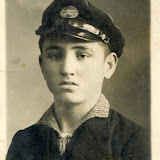Identity portraits of Turkish citizens
… sometimes I recognized a region of her face, a certain relation of nose and forehead … I never recognized her except in fragments.
Roland Barthes, Camera Lucida
In the 1880s Francis Galton, scientist and explorer of South West Africa, braved the slums of Whitechapel in search of the essential Jewish face. His method was to find a family and take composite portraits, sandwiching the negatives on each other and printing the result. If the families didn’t resist his intrusions it was probably because he had the imprimatur of other respected scientists and government departments. Too frequently Galton found families that didn’t quite match the details he was looking for. The mother and two children might be dark and have the classic Semitic nose but the father and the rest of the family looked too European. Galton’s answer was to ignore people who didn’t meet his requirements. He had already tried the same experiment on jailed criminals and something similar on successful English families and he believed he was engaged in real science. It must have been obvious to his cousin, Charles Darwin, he was producing propaganda. Darwin didn’t endorse the work.
At the same time, Alphonse Bertillon, inventor of anthropometric photography in the Paris Prefecture of Police, was extending his research away from criminals into the search for essential French features. Believing that by taking a person’s face he could detect regional variations so trace the history of their bloodlines, he took thousands of photographs of noses, ears, lips etcetera and cross-referenced them. Here he imagined, he’d find the Breton nose attached to the Aquitaine ear and the Burgundy mouth. The social history of France with its migrations and marriages would be revealed. Bertillon never had Galton’s respectability in the scientific community but wide-eyed reporters would turn up to his office for a lecture and leave ready to tell their readers great mysteries would soon be revealed.
Since the beginning of the 20th century governments around the world have been obsessed with photographing their citizens. In second hand shops around Istanbul there are shoe boxes and suitcases full of old photographs; tiny portraits the size of a postage stamp that were taken for official documents for the Turkish government. They are a field guide for anthropologists. We have fair skinned and swarthy people, Turks who look like Arabs, Turks who look like Russians, Circassian, Mediterranean and Balkan faces and people who wouldn’t look out of place in the north of Scotland. All this in a country where some people still invoke the image and the cult of the pure Turk, whose unadulterated bloodline can be traced back to the Altaic steppe. Their cause is lost. Everyone else can accept the logic that if a source of a nation’s greatness is its position at the centre of the world then racial purity is an absurdity. If the portraits in this gallery prove anything it’s that utopia is impossible. But we know that; hence they prove nothing.
 |
| TYPOLOGIES 1 |



No comments:
Post a Comment
Add comments here